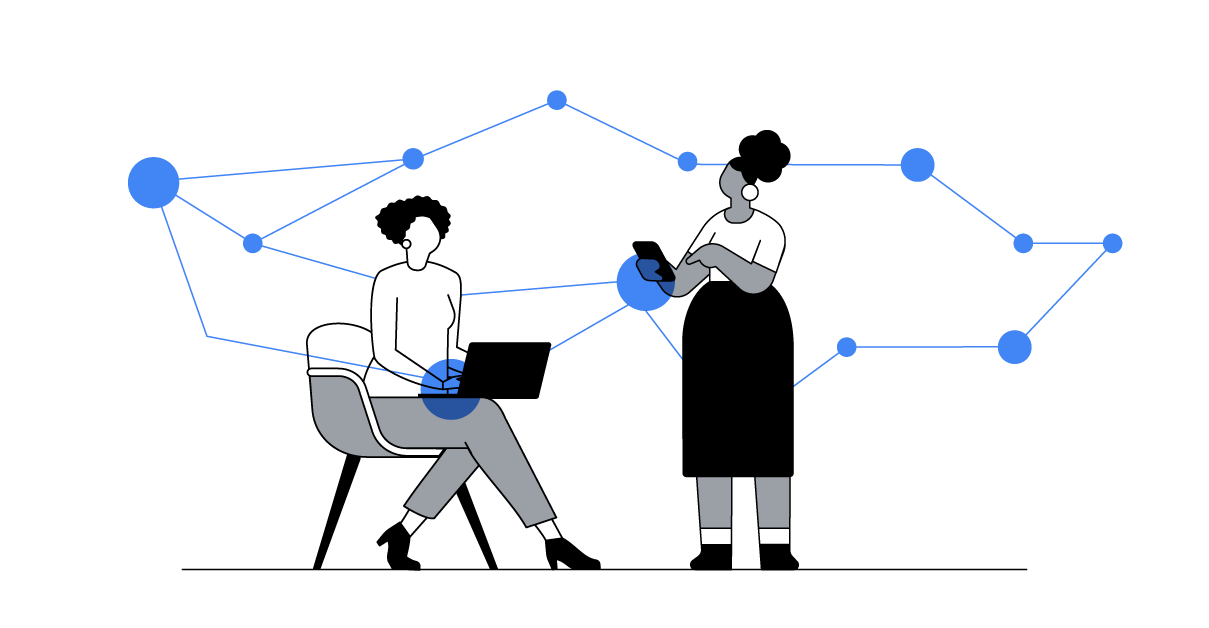Attributing conversions to the right ad interactions is essential for advertisers to accurately quantify return on investment. However, understanding your customers’ path to conversion while respecting their preferences can feel daunting with privacy expectations rising and observable measurement data decreasing.
Plus, as the industry moves away from individual identifiers like cookies on the web and device IDs in apps, relying on a single data source has become less viable. That’s why we’re committed to helping advertisers adapt to these ecosystem changes by making sense of complex data sets with privacy-first modelling solutions that automatically solve for unknowns in the customer journey.
How conversion modelling fills measurement gaps
Conversion modelling is the use of machine learning to assess the impact of marketing efforts when a subset of conversions can’t be directly linked to ad interactions. This helps create a more complete and accurate picture of your ads’ performance.
Let’s take iOS campaigns, for example, which may have access to fewer cookies and Identifiers for Advertisers (IDFAs) following Apple’s App Tracking Transparency (ATT) rollout earlier this year. If users tap your ad and later take an action, but don’t give permission through Apple’s ATT prompt for ad tracking, the link between your ad and their action is no longer visible to you, preventing you from definitively crediting the ad for the value it brought to your business. There are also cases in which we get aggregated conversion information for a group of users but don’t know exactly which ad interaction drove the conversion. To account for these instances, we categorise your conversions as “observable” or “unobservable” based on whether we can tie a conversion back to a specific ad interaction.
We’re committed to helping advertisers make sense of complex data sets with privacy-first modelling solutions.
For a given group of unobservable users, we identify an observable group with similar behaviours and characteristics that is derived from inputs such as operating system, device type, and time of day. If, for example, 5% of ad interactions by this observable group convert into purchases, we train our campaign model with this metric to arrive at the volume of conversions made by all users — observable or not — who interacted with your ad.
Grounding conversion models in observable and privacy-safe signals
A strong foundation of observable signals is crucial for reliable and accurate conversion modelling. Google grounds its conversion modelling in a diverse set of observable data sources.
1. First-party data
Examples include IDFAs, first-party cookies, and aggregated, de-identified signals. With IDFA and first-party cookie data, the users have opted in to ad tracking and personalisation on your app (or site) and through the publisher, where they interacted with your ad.
2. Data from platform APIs
Examples include SKAdNetwork and Google Chrome’s Privacy Sandbox Attribution Reporting API. For example, with iOS App campaigns, we account for the installs and conversion values that Apple attributes to App campaigns through SKAdNetwork, its cross-network measurement framework. In web campaigns, we are developing the Attribution Reporting API to measure click-through and view-through conversions in privacy-preserving ways.
3. Similar data sets
Similar data sets are derived from aggregated behaviours and conversion patterns of users similar to those interacting with your ads. These inform our models and allow us to calculate how frequently users with certain attributes convert after engaging with ads served through all of Google’s App and web campaigns. We then look at the number of your users with the same traits and apply that ad-to-conversion ratio to estimate your campaign’s total conversions.
Accurate and privacy-safe conversion modelling built into your Google campaigns
We report modelled conversions to you only when we are confident that they have occurred as a result of ad interactions. To validate our models’ accuracy, we apply our conversion models to a portion of traffic we hold back. We compare modelled and actual conversions from this traffic to check that there are no significant discrepancies, and to ensure our models can correctly calculate or quantify the number of conversions that took place on each of our campaign channels.
Our models are powered by Google’s expertise in machine learning, and they can adapt to address the unique user behaviours and business outcomes for each advertiser. For example, if many of your users interact and convert on different devices, our algorithms will calculate and report higher-than-average cross-device conversions. With modelling integrated directly into your campaigns’ reports, you can seamlessly access a combined and standardised set of both observed and modelled conversion data, making analysis and optimisation easier to manage.
We also ensure that in measuring your campaigns, we prioritise user privacy. Google has a strict policy against fingerprinting and other privacy-compromising tactics that use heuristics, including IP addresses, to identify and track individual users. Our models are designed to use aggregate data to preserve users’ privacy and protect their data.
Making measurement durable and compatible with multiple data sources
We’ve developed our conversion models to complement measurement results from multiple data sources when part of your conversions (including conversions made from web to app) are not being fully recorded. As a result, our models can plug gaps in the conversion path and enable you to piece together a more complete puzzle of all your user journeys.
With modelling integrated directly into your campaigns’ reports, you can seamlessly access a combined and standardised set of both observed and modelled conversion data.
Compatibility with new and dynamic inputs can also help maintain continuity in your campaigns’ performance as they adapt to ongoing privacy and measurement changes across the ad industry — automatically and without requiring extra work from you.
Preparing for a future of marketing with more modelled conversions
The ads ecosystem is evolving. To balance the need for stronger user privacy and campaign performance, be prepared to factor more modelled conversions into where and how you invest in ads. Account for multiple sources of measurement data, and as you make your marketing and budget decisions, account for modelled conversions across networks to capture a thorough view of which ads are working for you.






